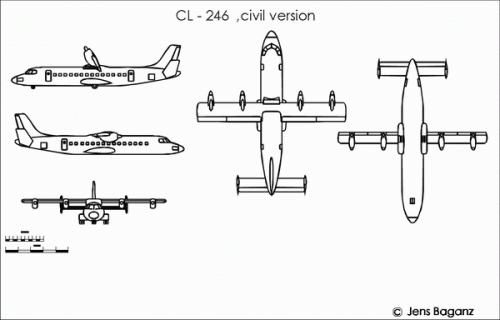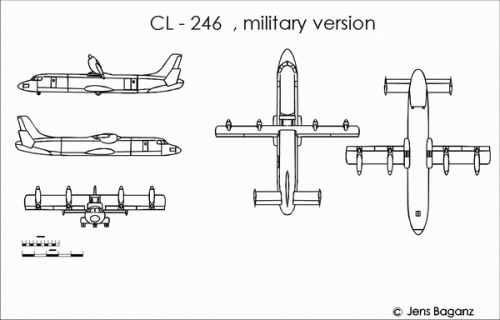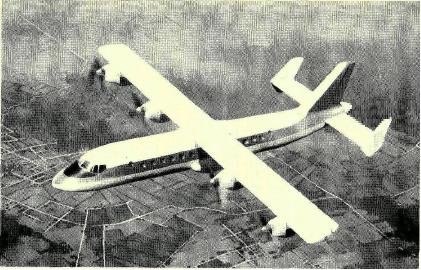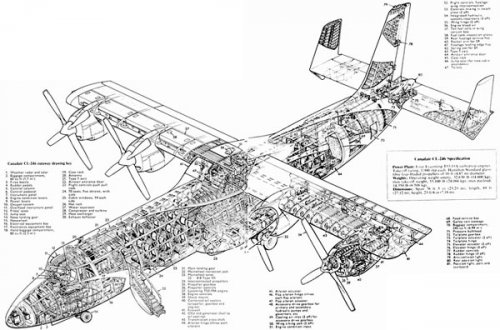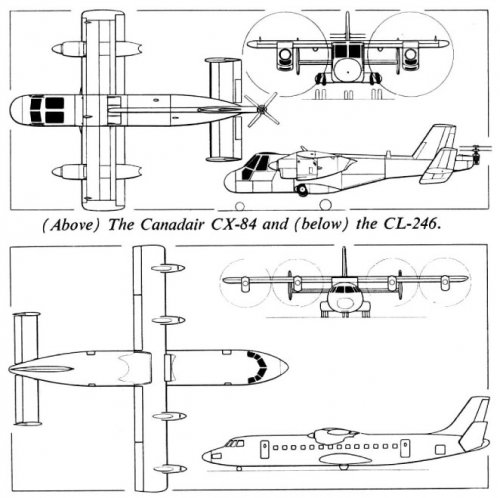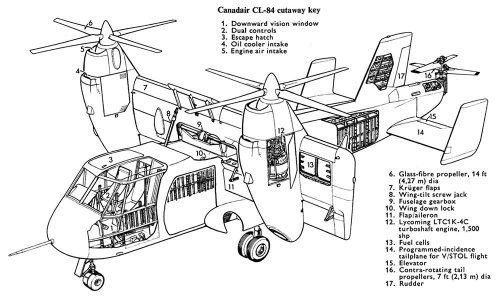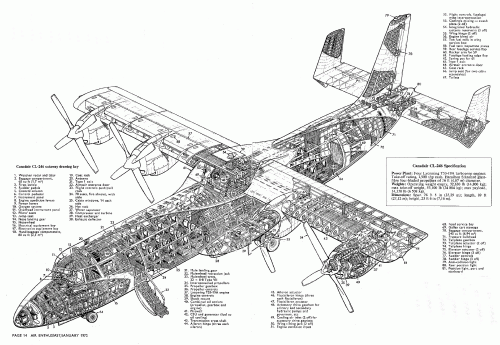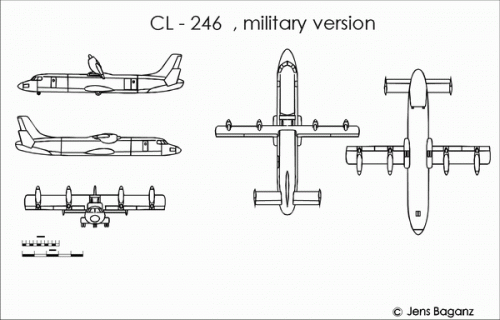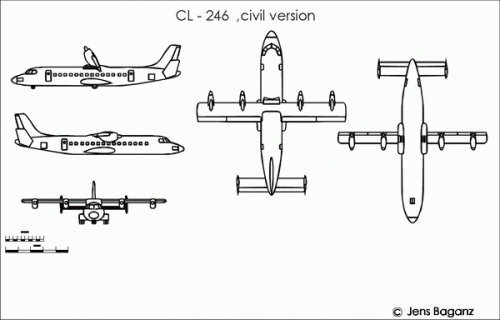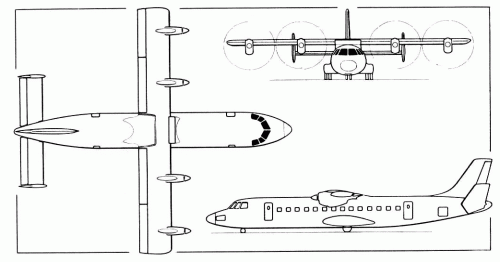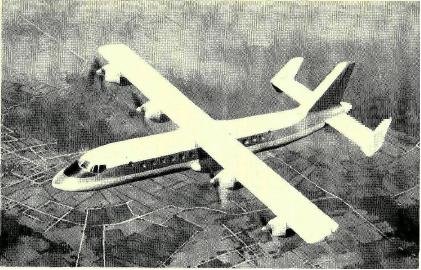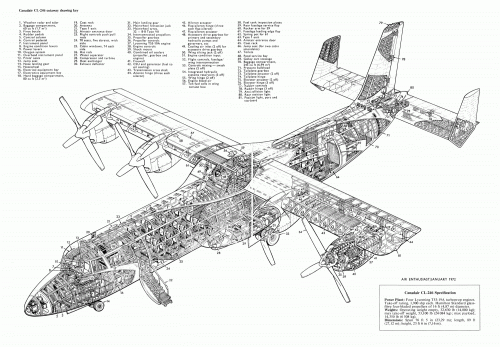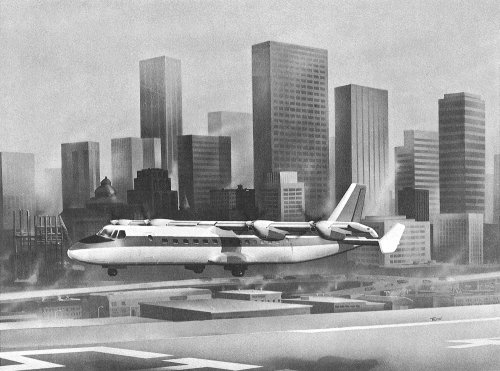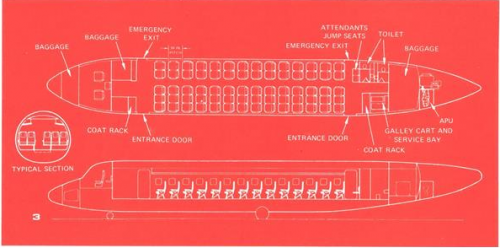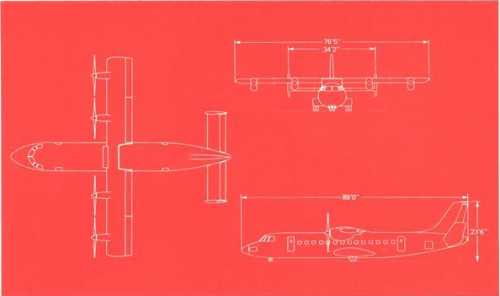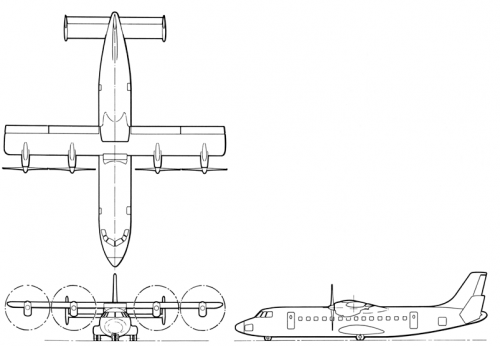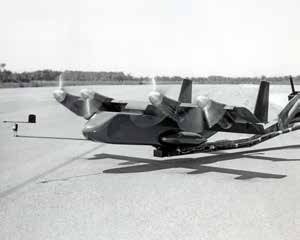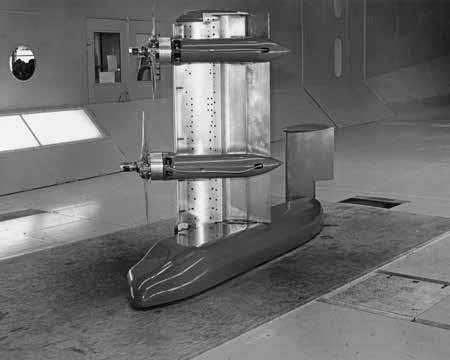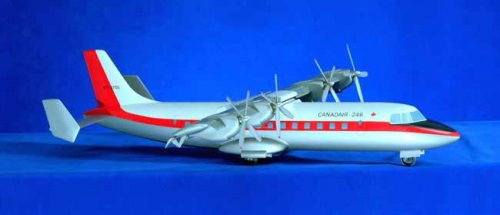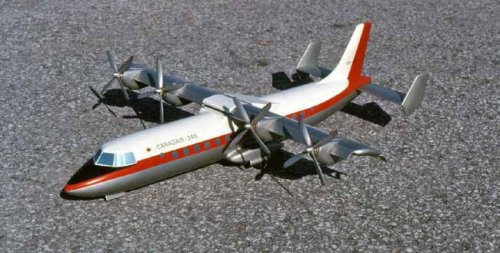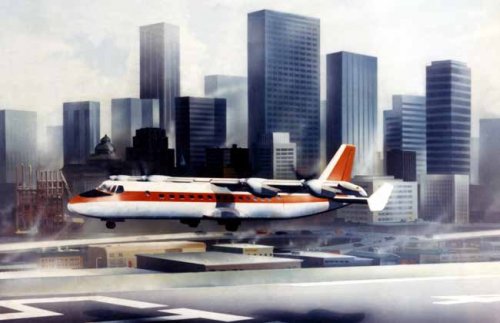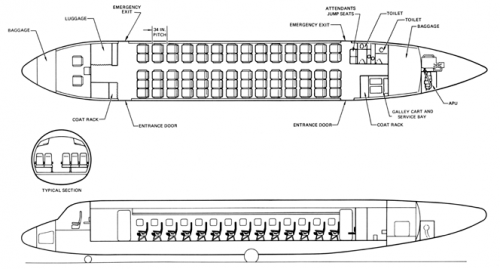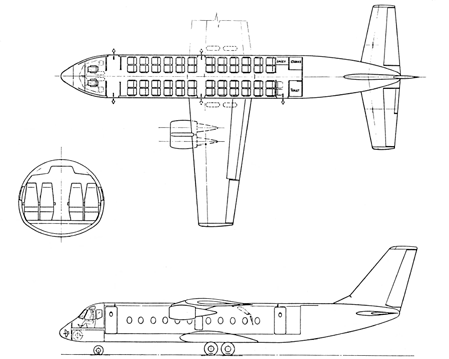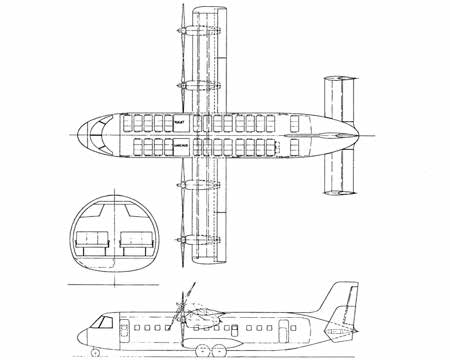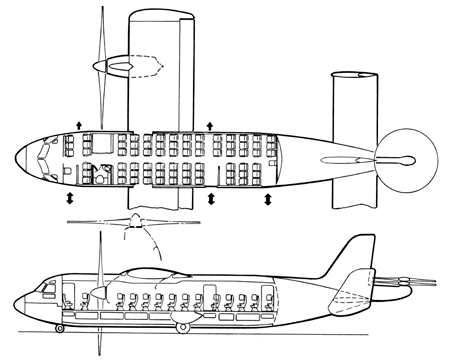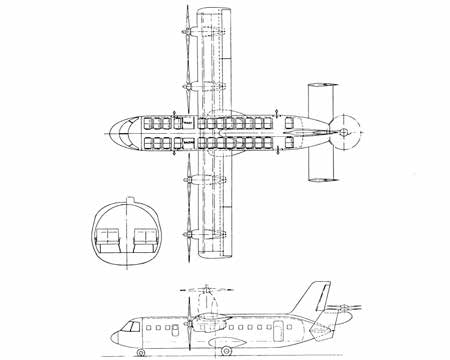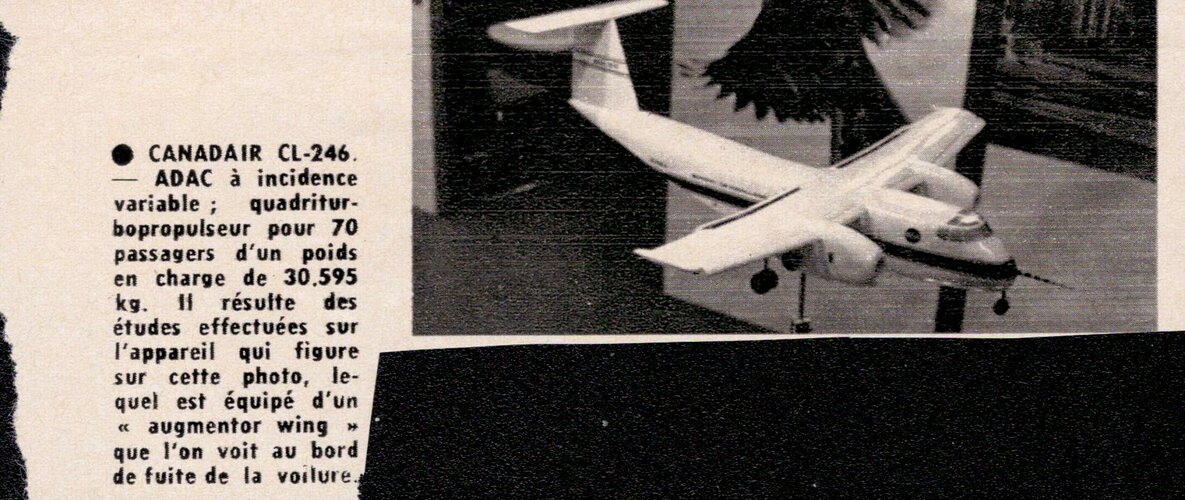The following write-up (in two posts) is taken directly from this document, previously shared by forum members
Kagemusha and
hesham, both in the CL-84 topic and here, and entitled:
DESIGN AND DEVELOPMENT HISTORY OF THE CANADAIR CL-84 V/STOL TILT-WING AIRCRAFT (written by Bill Upton, Canada Aviation Museum Research Volunteer, and published by the Canada Aviation Museum).
http://documents.techno-science.ca/documents/CASM-Aircrafthistories-CanadairCL-84VSTOLhistory.pdf
CL-246 Variable Incidence STOL Transport
Following the end of the Second World War, people began settling more and more into large urban environments separated from one another by ever-greater distances. The advent and rapid growth in civil and military air transportation during the 1950s and 1960s soon helped to shrink the vast distances between these urban centers.
However, it soon became apparent that much was left to be desired when it came to short and medium range air transportation from city-to-city, where the travelling to and from the airport was often longer than the air voyage itself. An ideal solution to solve this problem was the concept of rapid, quiet, inter-city STOL air transport services. Smaller, efficient aircraft with low noise levels were deemed essential for community acceptance of STOL operations.
For years the military had also been seeking for a family of STOL-type transport aircraft necessary towards getting troops and supplies into unprepared areas or to where long runways had been rendered unusable or were non-existent.
In 1958, the French aircraft manufacturer, Breguet Aviation built an experimental transport aircraft known as the BR. 940 Integral to flight-test the idea of the deflected-slipstream principal. First flown on 21 May 1958, this four-engine aircraft had the entire wing surface bathed in the propeller slipstream where large full-span flaps could be lowered producing extra lift for STOL operations. Breguet put forth a formal proposal in 1959 for a new STOL transport that was designed for civilian or military use using the deflected slipstream technique developed from the Integral. The idea caught the favor of the French Air Ministry and the construction of a prototype was started in February 1960.
Designated the Breguet 941, and powered by four Turboméca Turmo IIID turboprop engines, the prototype first took to the air on 1 June 1961. Impressive STOL performance demonstrated during the flight test programme soon led to the French government ordering the production of four additional aircraft with the updated Turmo IIID3 engines as the Breguet 941S.
The limited success of the early 941 design soon attracted the attention of the American McDonnell Aircraft Corporation, to the point where it was agreed that with McDonnell assistance, a flight demonstration tour of the aircraft in the United States was performed during June 1964 and again in March 1965. From these tours McDonnell proposed modifications to the Breguet design into one suitable for potential development as a commercial STOL transport. What evolved became known as the McDonnell Douglas Model 188 (MD 188), and it was almost immediately put to work evaluating STOL techniques in the United States as part of a Federal Aviation Administration (FAA) flight test programme to develop urban STOLport criteria.
In late 1968, a two-month evaluation of the MD 188 STOL Demonstrator, outfitted in a passenger configuration, was conducted by Eastern Airlines to evaluate the advantages and potential of this type of aircraft for use on the busy New York, Boston, Washington Northeast Corridor routes. American Airlines and McDonnell Douglas agreed on a similar evaluation programme that was conducted the following year between city centers at New York, St. Louis and Chicago. Despite these promising demonstration tours, no production orders for the Breguet 941 / MD 188 emerged.
Up North, de Havilland Aircraft of Canada (DHC) had been working for awhile perfecting yet another in a series of their world famous STOL-type aircraft designs, the hugely successful DHC-6 Twin Otter. In 1973, Ottawa instituted an advanced STOL experiment with newly formed Airtransit using specially modified Twin Otters (300S series) operating out of the new interurban STOL airports setup between Montreal (Cité du Havre, the former Expo ’67 parking lot) and Ottawa (Rockcliffe Airport). This premiere operation lasted until 1976, and laid the groundwork for future interurban STOL operations using the Dash 7 commercial STOL transport design. With a venerable STOL pedigree that included such popular forerunners as the DHC-2 Beaver, DHC-3 Otter, DHC-4 Caribou, DHC-5 Buffalo and the DHC-6 Twin tter, the new Dash-7 aircraft was predestined for success.
Even prior to the rollout of the first CL-84 V/STOL aircraft, Canadair designers had already envisioned a four-engine derivative of the ’84 for the commercial market that could transport passengers between urban hubs. The idea languished in a preliminary design phase, with some small model testing being performed, until the results of the Eastern Airlines and American Airlines STOL transport programme evaluations were concluded in 1969. Advanced design studies of the four-engine variant began again in earnest when Eastern Airlines requested proposals from aircraft manufacturers for a large commercial STOL transport towards the Light Intratheater Transport project to help ease the congestion along the busy Northeast coast routes.
By the summer of 1970, American Airlines, in conjunction with the FAA, also issued requests to thirteen airframe manufacturers for a 48 passenger, turboprop STOL transport design, with the capability of being compatible for use by the military.
The United States Air Force had been studying V/STOL transport concepts for awhile and took this opportunity to seek a family of readily available STOL transport aircraft for its Light STOL Transport (LST) requirements. One of the five configurations under study for the LST was a much-modified design of the Canadair CL-84. Slightly smaller, yet similar in look to the later USAF C-23A Sherpa light transports, the LST would be powered by dual General Electric T64-7 engines rated at 3,435 shaft-horsepower. Non-jettisonable wingtip fuel tanks provided additional fuel reserves. Three entrance and cargo doors, on the port side of the aircraft and a much larger cargo door on the starboard side provided access to the large cabin for the transport of personnel, litters, small vehicles, freight, or a combination of these capabilities.
Oriented towards STOL passenger airliner operations initially, Canadair decided to proceed with the advanced Variable Incidence STOL general concept, with the tilting wing technology of the CL-84 at its core, all incorporated into a new aircraft layout, and assigned it the Canadair model number CL-246.
In all respects a tilt-wing aircraft, the CL-246 embodied the variable incidence nomenclature to reflect the limited wing tilt available as compared to the CL-84 and its contemporaries. Whereas the fully tilting wing of the CL-84 allowed the propellers to act like rotors providing a vertical slipstream for VTOL applications, the wing tilt on the CL-246 was to be limited to a maximum of 30 degrees of incidence. Fifteen to eighteen degrees of incidence was envisioned as nominal for standard STOL operations. Originally, a fully tilting wing arrangement was proposed, with the accompanying tail rotor arrangement for longitudinal control, however this idea was eventually dropped as a panacea to some potential passenger’s concerns about their viewing out the windows, and seeing the wing and engine tilting up and away, out of sight.

